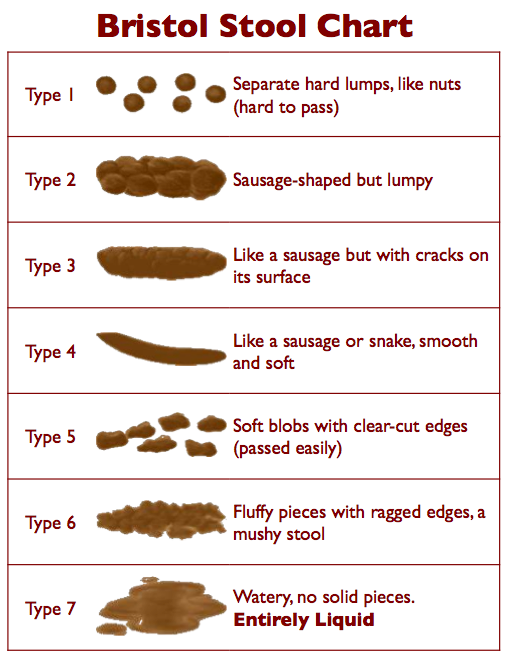Normally, feces are made up of 75 percent water and 25 percent solid matter.
About 30 percent of the solid matter consists of dead bacteria; about 30 percent consists of indigestible food matter such as cellulose; 10 to 20 percent is cholesterol and other fats; 10 to 20 percent is inorganic substances such as calcium phosphate and iron phosphate; and 2 to 3 percent is protein. Cell debris shed from the mucous membrane of the intestinal tract also passes in the waste material, as do bile pigments (bilirubin) and dead leukocytes (white blood cells ).
The brown colour of feces is due to the action of bacteria on bilirubin , which is the end product of the breakdown of hemoglobin (red blood cells). The odour of feces is caused by the chemicals indole, skatole, hydrogen sulfide , and mercaptans, which are produced by bacterial action.

- Types 1 and 2 : hard stool , dry stool, constipated stool, hard balls or nuts, lumpy
- Types 3 and 4 : normal stool, soft, sausage-shaped
- Types 5 , 6 , 7 : loose stool , watery stool , diarrhea stool, fluffy, uneven, blobs, poorly formed
Prepared by Rami E. Kremesti